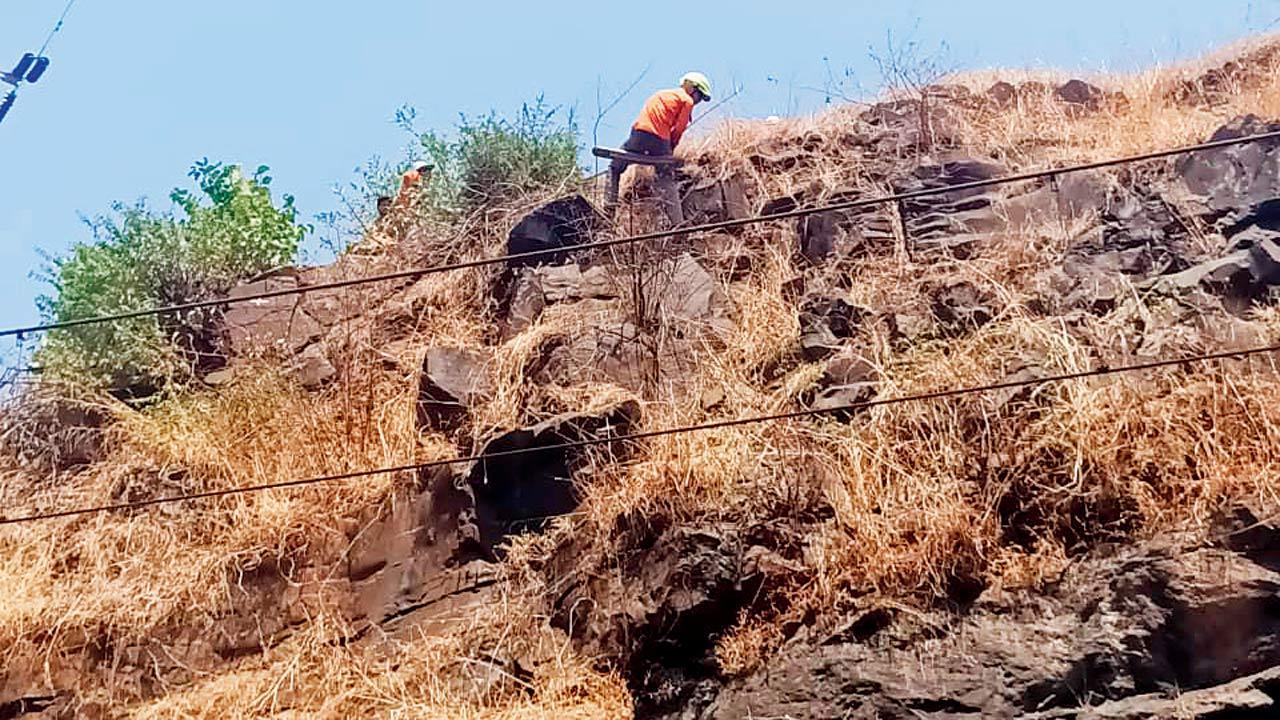The boulders are the ones that could come loose and fall over railway lines during rains; work expected to complete by month-end

Workers remove boulders in Khandala Ghat
Eight hundred and counting. Over 800 boulders posing a danger over railway tracks have been removed from the Sahyadri Hills this year. These potential threat bombs on cliffs hanging over rail lines become a danger during monsoon.
ADVERTISEMENT
Workers clear a waterway in a mountainside in Kasara Ghat
“Around 400 boulders in the Khandala Ghat section and 200 in the Kasara Ghat section have been removed so far. The preparations were started around January this year, including work estimates and tender finalisations and the fieldwork started in mid-March. The process involves identification of loose boulders, scanning of boulders and then dropping them with the help of a special train, which is made of flat wagons and one diesel engine on either side with trained staff. Around 40 per cent of the work is complete and we are aiming to finish it by May-end,” a railway official said.
“While the southeast, that is the Khandala Ghat line, is about 28 km in length with 58 tunnels, the northeast Kasara line is about 14-km-long with around 18 tunnels,” the official said.
To counter the falling boulders in the monsoon, CR has created steel tunnels that will the falling boulders and protect the passing trains below and also deployed 60 additional CCTV cameras, posted gangmen and drone cameras to alert approaching trains. After landslides, ghat sections were manned at 19 vulnerable locations last year and hotlines were used to stop oncoming trains.
In 2019, the Khandala line had been shut for quite some time after falling boulders led to holes in tunnels and landslides displaced tracks, broke overhead wires and smashed poles.
Flashback
The tracks in Sahyadri Ghat are the oldest mountain railway sections of Indian Railways built in the 1860s. Historically, Indian Railways have been dealing with the problem of boulders on the line since Day 1. Archival records of the Great Indian Peninsula Railway, which is now called Central Railway, on the initiation of passenger rail service on the ghat section in 1864, had issued a notice on the operation of the ‘terrain section’ by dividing the stretch into 13 parts with three watchmen deputed for each. Apart from this, one person would patrol the area on foot. Back then with similar problems during the monsoon, given the limited technology, the railways used to stop the movement of trains at night.
 Subscribe today by clicking the link and stay updated with the latest news!" Click here!
Subscribe today by clicking the link and stay updated with the latest news!" Click here!






